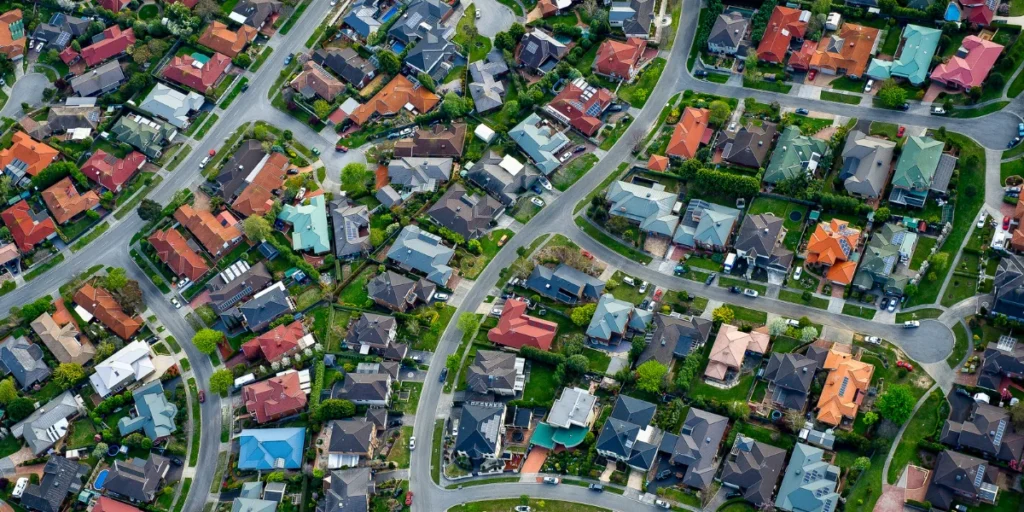The first home buyer scheme launching this Wednesday promises to revolutionise property market access for Australians, enabling all first-time purchasers to enter with just a five per cent deposit. Previously limited to 50,000 homebuyers—including 35,000 first home buyers, 10,000 regional spots and 5,000 single-parent homebuyers—the scheme now removes these caps entirely. According to government estimates, first time buyers using this assistance scheme are expected to avoid approximately £1.5 billion in potential mortgage insurance costs in its inaugural year alone.
However, the expanded government first home buyer scheme has already triggered significant market reactions. Property prices have jumped noticeably in many locations as buyers panic about the scheme’s broader impact, with homes previously selling for £750,000 last month now fetching close to £800,000. Meanwhile, economic analysts offer contrasting predictions about long-term effects—Treasury forecasts suggest a minor 0.5 per cent rise in house prices over six years. In contrast, Lateral Economics predicts the policy could drive prices up by 3.5 to 6.6 per cent by 2026. As a result, the first home buyer scheme Australia initiative presents both unprecedented opportunity and potential market challenges for prospective homeowners.
Government Launches First Home Buyer Scheme

From October 1, 2025, the Australian Government’s expanded First Home Guarantee will offer unlimited access for all eligible first home buyers to step a foot in the property market with a deposit of just 5%. This marks a significant expansion of the previously limited scheme that has already supported over 240,000 home buyers in achieving their ownership dreams.
First Home Buyers Eligible Under New Rules
The reformed scheme eliminates several barriers that previously restricted access. Most notably, the government has removed all place caps, ensuring every eligible Australian first home buyer can apply. Furthermore, income limits have been abolished, opening the scheme to higher-earning individuals and couples who were formerly excluded.
Under the expanded programme, the Regional First Home Buyer Guarantee will be replaced by the First Home Guarantee, creating a more streamlined application process for those in regional areas. The government will guarantee a portion of the home loan, essentially standing in as security for the additional 15% that would typically require a larger deposit.
Higher Property Price Caps Expand Access
Property price caps have been substantially increased across most regions to reflect rising housing costs. For instance, in New South Wales’ capital city and regional centres, the cap will jump from AUD 1,376,091.21 to AUD 2,293,485.35. Similarly, Queensland’s capital city and regional centre cap will rise from AUD 1,070,293.16 to AUD 1,528,990.23.
These adjustments allow buyers to access a broader range of properties. Consequently, a first home buyer in Brisbane could purchase a AUD 1.53 million home with just a AUD 76,449.51 deposit.
Avoids £1.5 Billion in Mortgage Insurance
The key financial benefit comes through the elimination of Lenders Mortgage Insurance (LMI), which is typically required for deposits under 20%. Housing Australia offers participating lenders a guarantee through the program of up to 15% of the first time homebuyer’s property value.
This arrangement enables buyers to save substantial amounts on upfront costs. For example, a buyer purchasing an existing property in NSW valued at AUD 917,394.14 with a 5% deposit could save over AUD 30,579.80 by avoiding LMI. In total, first home buyers using the scheme are projected to avoid approximately AUD 2.29 billion in potential mortgage insurance costs in just the first year.
The scheme is available through over 30 participating lenders across Australia, including major banks and regional financial institutions.
Buyers Rush to Market Ahead of Scheme Rollout

Anticipation of the first home buyer scheme has already triggered a buying frenzy in the property market, with prospective homeowners racing to secure properties before the official launch.
Panic Buying Drives Up Prices in Key Suburbs
The scheme’s announcement has led to increased buyer demand, driving up prices across numerous suburbs. In some locations, properties are selling rapidly and often significantly above asking prices. During previous similar initiatives, rural areas saw house prices surge by 12% in a single year. Specifically, some properties have sold for as much as £100,000 above asking prices, with buyers willing to pay £10,000 just to view properties in high-demand areas.
Sight-unseen Purchases and Overbidding Trends
Currently, one in four buyers is looking beyond their state lines to purchase property, with interstate inspections representing 27% of all property inspections. In less than two years, the percentage of buyers who made investments in places more than 200 km from home increased from 29.5% to 44.65%. Additionally, 11% of property buyers would purchase real estate without viewing it—more than those willing to buy pets, vehicles, or boats sight unseen. During the pandemic, only 42% of buyers viewed their property in person before purchasing.
Fear of Missing Out
Fear of missing out (FOMO) is compelling buyers to make hasty decisions. Finder’s research found that 65% of firsthome buyers expect to spend 30% or more of their income on loan repayments, which puts them into mortgage stress. Subsequently, 47% of first time buyers paid more than budgeted (up from 38% in 2022). This anxiety has led to concerning financial outcomes—one in seven Australians who bought their first home in the past year have no savings left. The most common regrets among buyers are paying too much and not saving a large enough deposit, which together account for 76% of all regrets.
Experts Urge Caution Amid Market Frenzy
Property experts are voicing concerns about the first home buyer scheme, and industry bodies are calling for caution despite the government’s enthusiasm.
REBAA Warns of Affordability Crisis
The Real Estate Buyers Agents Association (REBAA) has highlighted that the national housing crisis requires a comprehensive long-term strategy. REBAA president Cate Bakos emphasised that housing issues extend beyond Queensland, affecting all of Australia. The Reserve Bank has delivered a sobering assessment, stating there “won’t be a quick fix to affordability problems”. Despite new government initiatives, demand pressure will continue to push up rents and prices until adequate new supply becomes available.
Stick to Budgets and Avoid Overpaying
Financial experts urge first time buyers to maintain discipline despite market excitement. Research reveals that many Australians who purchased their first home recently have depleted all their savings. The property market is creating a significant divide in society, with Australian households ranking among the world’s most indebted as buyers compete for increasingly expensive properties. Housing affordability has now dropped below its previous low point, making Australian housing “the most unaffordable in history“.
Role of Professional Buyers’ Agents in Navigating the Market
Professional buyers’ agents can provide valuable guidance in this challenging environment. Nevertheless, REBAA warns about the surge of inexperienced operators entering the market, drawn by “promises of high earning potential”. Industry associations, including REBAA, PIPA, and REIQ, play a crucial role in promoting transparency and professional standards. While representing approximately 83% of rental providers, private investors require proper support rather than disincentives to ensure an adequate housing supply.
Will This Solve or Worsen Housing Affordability?

Research indicates the government’s first home buyer scheme offers immediate access benefits yet potentially contributes to long-term affordability problems. The housing market requires balanced interventions rather than one-sided solutions.
Short-term Benefits vs Long-term Price Inflation
Studies show that first home buyer assistance schemes typically accelerate purchases for those already planning to buy rather than broadening market access. Although loosening mortgage restrictions helps offset difficulties in high-price environments, these policies often inflate property prices. Historical data reveal previous similar interventions translated to approximately AUD 76,450 increases in housing prices. Initially helpful for individual buyers, such schemes ultimately drive up overall market costs.
Related Article: Mortgage Calculator UK: Estimate Your Monthly Payments with Ease
Why Supply-Side Solutions are Still Missing?
The housing crisis stems primarily from supply shortages rather than financing barriers. Indeed, experts emphasise that demand-side policies giving people more money typically end up increasing prices further. Australia requires an estimated AUD 443.41 billion investment over 20 years just to address social and affordable housing shortfalls. Essentially, building an adequate supply will take decades, while current government programmes focus primarily on enabling more buyers to compete for limited stock.
Potential Future Reforms to Balance Demand and Supply
Effective housing policy must address both sides of the market. Potential reforms include:
- Streamlining planning approvals to reduce development costs
- Updating zoning regulations to enable medium and high-density options
- Encouraging diverse housing models, including build-to-rent developments
- Investing in data-driven planning for more targeted interventions
- Matching increased housing density with appropriate infrastructure
Conclusion – First Home Buyer Scheme
Australia’s expanded First Home Guarantee scheme certainly provides unprecedented opportunities for first time property buyers. By removing caps and reducing deposit requirements to just 5%, many Australians previously locked out of the market can now pursue homeownership. Nevertheless, the rapid market reaction—with prices already climbing in anticipation—demonstrates the delicate balance between access and affordability.
While buyers stand to save approximately £1.5 billion in mortgage insurance costs during the first year alone, this immediate benefit must be weighed against potential long-term consequences. Though Treasury forecasts suggest minimal price impacts, other economic analyses predict more substantial increases, raising questions about future affordability. Accordingly, panic buying, sight-unseen purchases, and overbidding trends were observed ahead of the scheme’s launch signal concerning market behaviours.
The stark warnings from industry bodies such as REBAA and financial experts underscore a fundamental challenge: demand-focused interventions without corresponding supply increases often drive prices upward. Despite good intentions, history shows similar schemes have ultimately contributed to price inflation rather than solving affordability problems. The scheme, therefore, represents a partial solution at best.
Looking ahead, true housing reform requires a two-pronged approach addressing both market access and supply constraints. Until planning reforms, zoning changes, and significant investment in diverse housing options materialise, schemes like this risk perpetuating the cycle of rising prices. First home buyers should thus approach the market cautiously, adhering to budgets and resisting FOMO-driven decisions despite the scheme’s apparent advantages. After all, while easier market entry offers immediate gratification, sustainable affordability remains the greater challenge for Australia’s housing future.
How does the First Home Buyer Scheme work?
The scheme allows eligible first-time buyers to purchase a home with only 5% deposit. Buyers may save thousands of pounds by not needing Lenders Mortgage Insurance because the government insures up to 15% of the property value.
What are the eligibility criteria for the scheme?
The expanded scheme is now open to all first-time buyers without income limits or caps on places. Property price caps have been increased in most regions to reflect rising housing costs, allowing access to a wider range of properties.
Are there any risks associated with the scheme?
While the scheme offers immediate benefits, it may contribute to long-term affordability issues. Experts warn of potential price inflation and urge buyers to stick to their budget.
How much can first-time buyers save through this scheme?
First-time buyers using the scheme are projected to avoid approximately £1.5 billion in potential mortgage insurance costs in the first year alone. Individual savings can be substantial, with some buyers saving over £15,000 on a typical property purchase.






